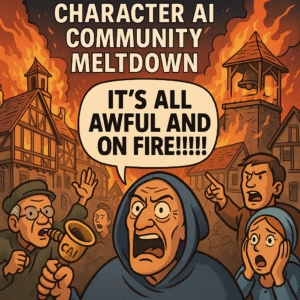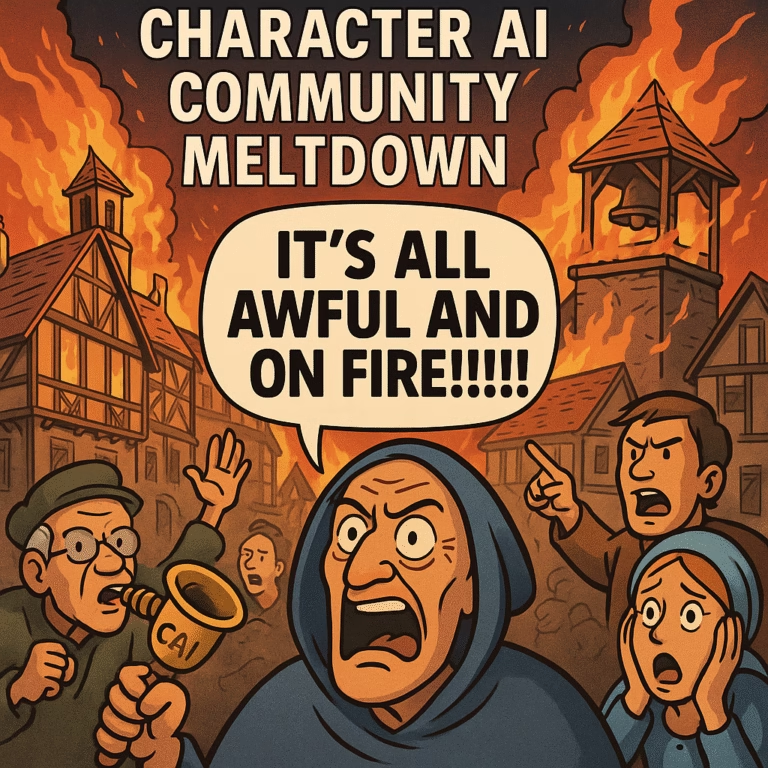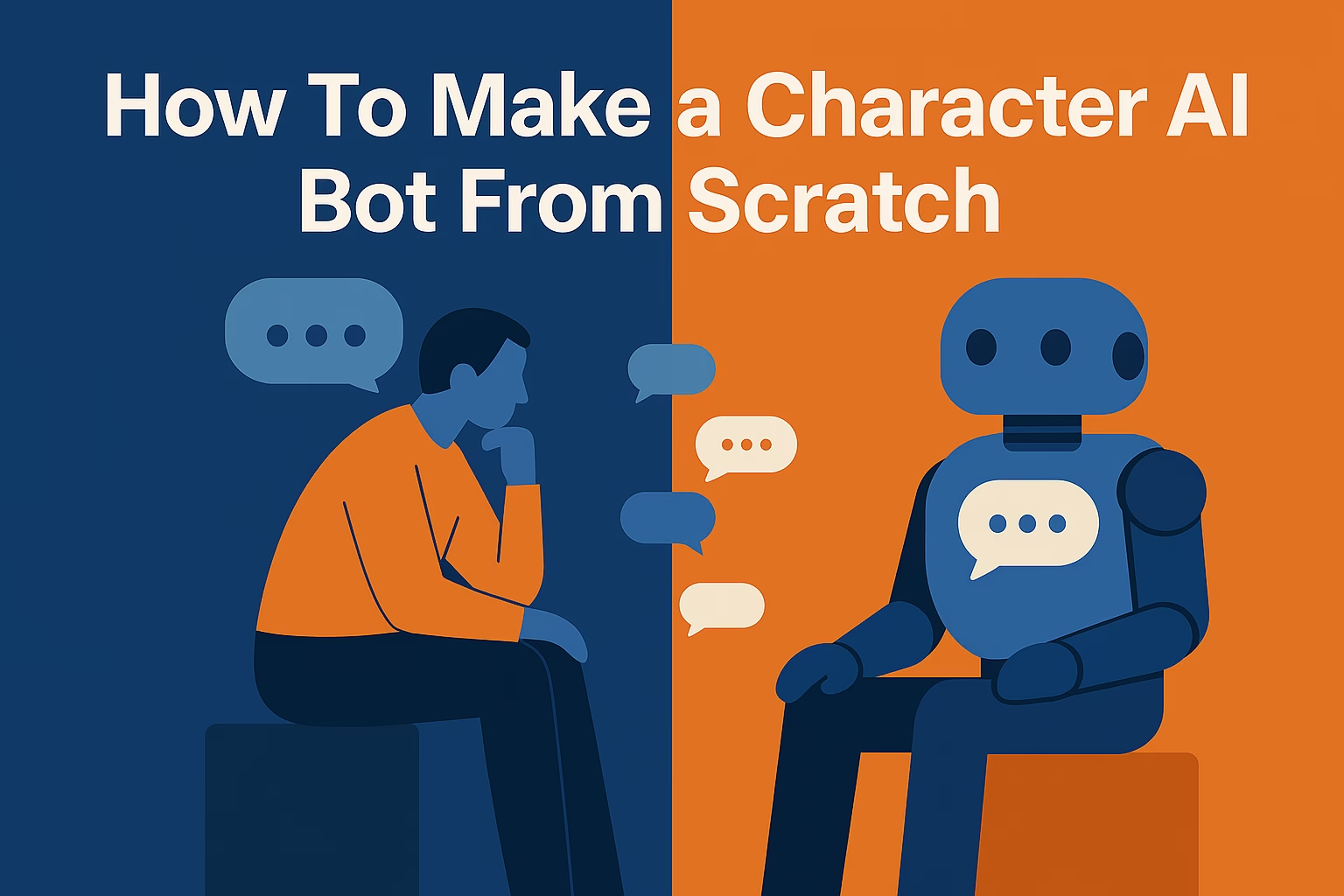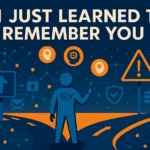Key Takeaways
- Outrage is louder than reality. Most flare ups are volume, not collapse.
- Nostalgia edits the past. Early novelty felt magical, not flawless.
- Some issues are real. Copyright removals and weak communication still sting.
- New users shift the tone. Fast reactions and memes amplify every hiccup.
- Humor keeps the lights on. Jokes release pressure and keep people from quitting.
- Perspective wins. Build, rest, return, and pick tools that respect story and tone such as
Candy AI.
If you’ve spent more than ten minutes in the Character AI community lately, you’d think the app was actively catching fire. Every update sparks a thread of doomsday predictions. Every bug becomes the final straw.
Scroll long enough and you’ll find someone declaring, “This is it. The end.”
The irony? The platform is mostly fine. Half of the outrage isn’t about broken features – it’s about bruised expectations. When people pour emotion into bots that feel personal, any hiccup feels like betrayal.
Add in groupthink and meme culture, and soon everyone’s screaming about the apocalypse before even checking what changed.
This is the modern echo chamber in motion: frustration becomes performance. A few angry users post dramatic titles, others join for catharsis, and suddenly “the app is dying” becomes the daily gospel. It’s not that the problems aren’t real. It’s that the volume is.

The Nostalgia Trap
Every community with history eventually falls into the nostalgia pit. The Character AI crowd is no different. People keep talking about the so-called glory days when “the bots were smarter” and “the stories felt real.”
But memory edits itself. What users call perfection was often just novelty. The first months with any new technology always feel magical because you have not learned its limits yet.
Back then, the app crashed constantly, queued people for hours, and produced random nonsense half the time. But it was new. You could forgive it because no one expected better. Once the novelty wore off, the same chaos that used to feel exciting began to feel like decline. That is nostalgia in action.
There was no golden age, just the excitement of discovery. Now that people know what AI can and cannot do, they confuse familiarity with failure. The truth is, the app did not get worse. The illusion wore off.
Real Issues, Not Just Noise
Of course, not every complaint is drama. Some are valid and long overdue for attention. Copyright purges, disappearing bots, and sudden moderation shifts do matter.
Losing a creation you built for months hurts, and silence from developers makes it worse. The frustration is not imaginary. It comes from a lack of communication and accountability.
The difference is scale. Constructive criticism dies fast online because outrage travels faster. The loudest voices drown out the thoughtful ones, and that is how genuine issues get buried under panic.
The app has real technical challenges – memory instability, uneven updates, slow fixes – but shouting about apocalypse does not solve them.
What would help more is clarity. People want to feel that someone is listening and that updates come with explanations, not mysteries. Until that happens, every small bug will still look like a warning sign. And that is how small issues become headline drama.
The New User Energy Shift
The tone of the Character AI community changed the moment it went mainstream. Early users treated it like a creative workshop. They experimented, failed, and swapped ideas quietly. Now the space runs on instant reaction.
Newer audiences arrive with social media reflexes – post first, think later. Outrage performs well, and everyone knows it.
You can see it in the rhythm of posts. A small bug turns into a movement. Someone shares a meme about censorship or memory loss, and the thread fills with comments that sound less like feedback and more like collective venting.
It is not malice. It is momentum. Anger and irony get more engagement than calm explanations ever will.
The older crowd tends to pull back, tired of defending a hobby that feels louder than fun. The younger crowd thrives on the noise because that is how they were raised online – through cycles of hype, panic, and repeat.
The result is a strange loop where frustration fuels attention, and attention fuels more frustration. The product becomes the stage, not the tool.
Humor as Coping Mechanism
For all the yelling, people are still laughing. Humor is how the Character AI audience survives its own chaos.
Every meltdown spawns memes, screenshots, and sarcastic threads that turn anger into amusement. It is the digital version of rolling your eyes at the fire while roasting marshmallows on it.
When users joke about their bots glitching or breaking character, it softens the edge of disappointment.
You can feel that the humor is tired but affectionate. It says, “Yes, this thing is a mess, but it is our mess.” That collective laughter is what keeps the place human.
Memes do what official updates cannot – they release pressure. Every laugh keeps users from quitting altogether.
Even the jokes mocking the drama serve a purpose. They remind people that not everything needs to be a protest. Sometimes you can just laugh, log off, and come back tomorrow when the storm has passed.
Stepping Back From The Fire
The drama will not end. That is the honest truth. Every online space with passion eventually turns theatrical, and Character AI’s audience might be one of the most emotional on the internet.
The same people who rage about updates are the ones who spend hours building characters, testing personalities, and sharing stories with strangers. They care too much to stay quiet.
But that passion needs to mature. Endless complaining burns out the community faster than any broken feature ever could. Taking a step back is not apathy; it is perspective.
This is still experimental technology. It will fail, it will frustrate, and it will eventually get better. The difference between a dying app and a growing one is whether its users learn patience.
When you look past the smoke, the platform is evolving. The models are smarter, the interface cleaner, and the creative ceiling higher than before. It is not perfect, but it is alive – and that counts for something.
Winding Up
Every online world swings between love and outrage. The Character AI community just swings harder. Some people are tired, others defiant, but nearly everyone still checks in every day. That says more than the noise ever could.
The real test is whether users can stop treating every bug like betrayal.
The app is not your enemy. It is an unfinished experiment trying to grow in public. The best way forward is to care less loudly but more consistently. Build, test, laugh, and move on.
If the constant chaos has worn you out, try tools that take story and tone more seriously, like Candy AI.
It offers the same creative freedom without the background shouting. A calmer space can remind you why you loved AI storytelling in the first place.
The world is not on fire. It is just noisy. And sometimes, that is what keeps it interesting.



Pingback: Why Some Users Say Character AI Quality Is Better Than Ever - AI TIPSTERS